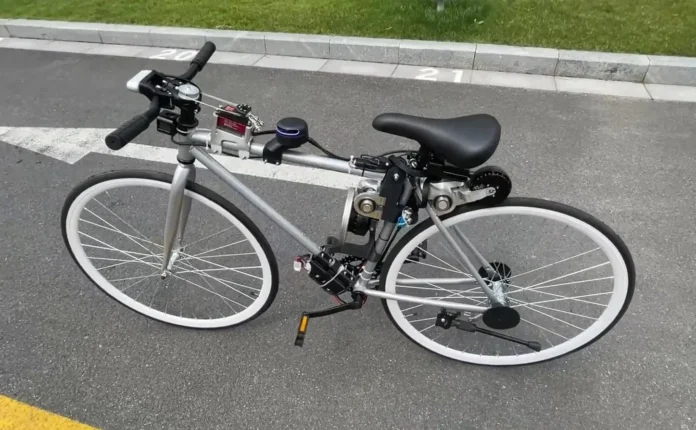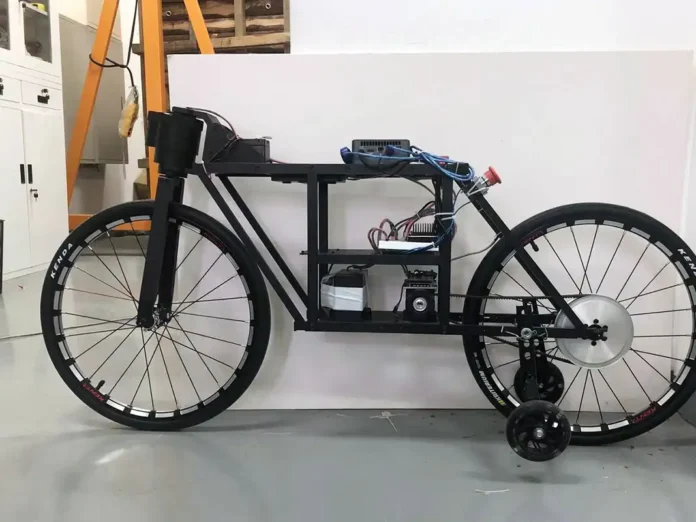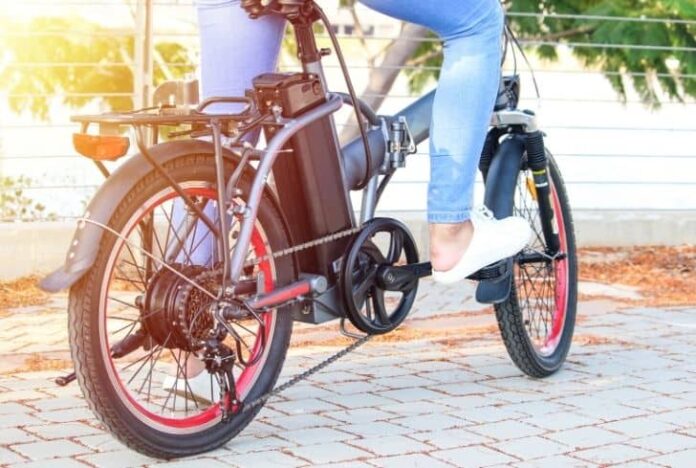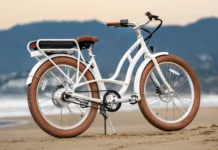Hey there, have you ever heard of a self-balancing bicycle? It sounds like something out of a science fiction movie, but it’s here now! Self-balancing bicycles are the latest in personal transportation technology.
They use sophisticated sensors and motors to keep you upright and balanced – no more shaky rides or strained muscles! Today, we’ll look at how the technology works, the advantages of a self-balancing bicycle, and where you can find one.
Definition of Self-Balancing Bicycle

A self-balancing bicycle is a type of bicycle that uses sophisticated sensors and motors to keep the rider balanced and upright while riding. The bike also has an LED display that shows speed, battery life, and other important information. Self-balancing bicycles are lighter than traditional models and offer energy-efficient power, making them ideal for commuting or recreational cycling.
Components of a Self-Balancing Bicycle

1. Gyroscope Sensor
A self-balancing bicycle uses gyroscopes and accelerometers to detect changes in the rider’s movement and adjust the motors accordingly. This allows for a steady ride even when riders stop pedaling or shift their weight.
The bike also has an LED display showing information like speed, battery life, and other important details. This technology works together to keep you balanced and upright without straining your muscles. Another tool that has been used is the linear actuators as they offer the same level of reliability. You can find more information about linear actuators on this website and also check different types available.
2. Angular Momentum
Angular momentum is another key factor in the operation of self-balancing bicycles. Angular momentum is the rotational equivalent of linear momentum and describes the motion of an object as it rotates. It is this angular momentum that helps keep the rider balanced while riding a self-balancing bicycle, as it helps to counter any sudden shifts in weight or direction.
3. Control Algorithm
Self-balancing bicycles use a control algorithm to keep riders balanced and upright while riding. This algorithm combines gyroscopes, accelerometers, and LED display data to adjust the motors accordingly. The algorithm determines how much force the motors need to apply to maintain balance so that even if the rider stops pedaling or shifts their weight, they won’t fall off.
4. Model Power Lithium Battery
Model power lithium battery is a great choice for powering your self-balancing bicycle. It offers unmatched power and reliability, so you can be sure that your bike will always stay balanced. The battery is made from advanced lithium-ion cells and can hold a charge for up to 10 hours. Plus, it’s lightweight and easy to install, so you don’t have to
5. Steering Gear
Steering gear is an essential component of any self-balancing bicycle. This technology helps keep your ride smooth and balanced, even when cornering or turning. The steering gear uses a combination of sensors and motors to detect shifts in weight and direction to adjust the bike accordingly. This helps prevent falls and keeps your ride comfortable – no matter how fast you’re going!
6. Bicycle Frame

Self-balancing bicycles utilize a lightweight frame specifically designed to handle the weight of the rider and the gyroscopes, accelerometers, and motors. This frame is usually made from aluminum or carbon fiber, which helps keep it light while still providing enough strength to handle the bike’s movements. Plus, this type of frame is more likely to absorb shocks than heavier frames, making it a great choice for off-road tracks.
7. Wheels and tires
The wheels and tires of a self-balancing bicycle are specially designed to keep the bike balanced while riding. The wheels have wide treads for improved grip, while the tires have adequate cushioning for comfort and increased traction on different terrain. This helps keep you stable even when the terrain is uneven, so you can enjoy your ride without worrying about falls or accidents.
Overall, self-balancing bicycles offer a unique and fun way to get around. With improved power efficiency, lighter-weight components, and enhanced safety features, they are sure to become more popular in the years to come. Whether you’re looking for a new commuting option or just want a fun way to explore your city, a self-balancing bicycle could be the perfect choice.
Benefits of a Self-Balancing Bicycle
Self-balancing bicycles use gyroscopes and accelerometers to detect changes in the rider’s movement and adjust the motors accordingly. This allows them to maintain balance even when the rider stops pedaling or shifts their weight. The bicycle also includes an LED display that shows speed, battery life, and other important information.
Improved Balance & Safety
A self-balancing bicycle works by using gyroscopes and accelerometers to detect changes in the rider’s movement and adjust the motors accordingly. This ensures that the bike is always balanced, even when the rider stops pedaling or shifts their weight. Additionally, LED displays show important information such as speed, battery life, and more.
This type of bicycle also offers improved safety since it can correct its balance without any input from the rider. This eliminates the need for riders to focus on balancing the bike, allowing them to enjoy their ride without worrying about falls or accidents.
Eco-Friendly

Self-balancing bicycles are eco-friendly since they require no additional fuel or electricity. This means that riders can enjoy a green form of transportation without having to worry about their carbon footprint or the impact they are having on the environment.
In addition, self-balancing bicycles can be used for commuting or leisure activities and can reduce the need for cars in many areas. This can help reduce emissions and pollution while providing an enjoyable mode of transport that is also cost-effective.
Great for Children Learning to Ride Bicycles
Self-balancing bicycles are a great choice for children learning to ride bicycles. The balance of the bike can help them stay stable, even when they are not familiar with how to handle the bicycle on their own. This can make learning to ride a bike much easier and more enjoyable. Additionally, since self-balancing bikes don’t require any additional fuel or electricity, parents won’t incur any further costs aside from the cost of the bike.
Where Can I Find One?
Self-balancing bicycles are available from a variety of online retailers, as well as some retail stores. Prices range from around $1,000 to several thousand dollars depending on the model you choose.
Conclusion
Self-balancing bicycles are the latest in personal transportation technology. They use sensors and motors to keep riders balanced, even when they stop pedaling or shift their weight.
Additionally, these bikes are lightweight and energy efficient, making them a great option for commuters and recreational cyclists. If you’re looking for a unique way to get around town, a self-balancing bicycle may be the best fit.



